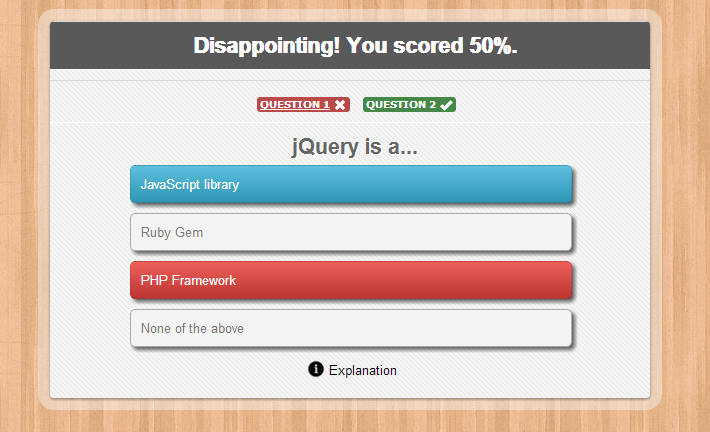
Insights Into WordPress
Used on millions of sites worldwide, WordPress is now the world’s most popular self-hosted blogging tool. Over the years, hundreds (if not thousands) of people from all over the world have collaborated to develop this wonderful piece of free and open source software (meaning people are free to use it for all kinds of different things with a relatively high degree of freedom) into a fully fledged Content Management System that not only excels in the world of blogging, but also as a system capable of powering all sorts of ventures – from sites with only a few pages to huge media and ecommerce sites with thousands of pages.
There is no denying that WordPress has taken over the online world with it’s simple to use, often updated, open source software weblog that is now called WordPress.
WordPress is the company to learn from when building your own service and business model. There are many reasons behind its popularity – WordPress was downloaded impressive 140 million times – but the most important one is the fact that it’s very easy to use. In times when building a good looking and functional website means that you had to employ both a programmer and a designer, WordPress made a solution with an easy-to-use interface that allowes anyone with the basic tech knowledge to maintain their site. It also boasts a powerful community that is constantly making new plugins, likejetpack.me, that enhance its native features.
Powering over a quarter of new websites and digital services across the globe, the rise of WordPress has been nothing short of meteoric. It’s now the dominant digital framework and for good reason; it’s open source (love it), very powerful, incredibly extensible and lightweight.
The story of WordPress is the story of a solution that in only 12 years became the most beloved CMS in the world. Today, the company that employs 229 people powers 22% of all websites, including 48% of world’s 100 most visited websites. Even domain.me is on WordPress!

WordPress is currently the most popular CMS in use on the Internet and here is the short, but impressive history of WordPress and how it came to be.
At the age of 18, Matt Mullenweg – the programmer son of a software engineer – started using b2 aka cafelog to share photographs he took while on a trip in Washington, DC. The blog? Photomatt, which redirects to Matt’s official blog, Ma.tt.
One year later, Michel Valdrighi – the guy behind b2 – stopped releasing updates to the platform, a move that prompted Mullenweg to fork the b2 software (to bring it up to date and accommodate his blogging needs). Oh yeah, Matt was blogging actively at the age of eighteen, and this is what he said in a blog spot, The Blogging Software Dilemma, that marked the birth of WordPress ten years ago:
My blogging software hasn’t been updated for months, and the main developer has disappeared, and I can only hope that he’s okay. What to do? Well, Textpattern looks like everything I could ever want, but it doesn’t look like it’s going to be licensed under something politically I could agree with. Fortunately, b2/cafelog is GPL, which means that I could use the existing codebase to create a fork, integrating all the cool stuff that Michel would be working on right now if only he was around. The work would never be lost, as if I fell of the face of the planet a year from now, whatever code I made would be free to the world, and if someone else wanted to pick it up they could. I’ve decided that this the course of action I’d like to go in, now all I need is a name. What should it do? Well, it would be nice to have the flexibility of MovableType, the parsing of TextPattern, the hackability of b2, and the ease of setup of Blogger. Someday, right?
Matt’s blogging software dilemma post got a reply from Mike Little, now a WordPress specialist and a big name in the WordPress community. At 3:58 PM on January 25, Mike posted:
Matt,
If you’re serious about forking b2 I would be interested in contributing. I’m sure there are one or two others in the community who would be too. Perhaps a post to the B2 forum, suggesting a fork would be a good starting point.
By May 30, the world of web publishing was changed forever.
It didn’t happen overnight, but it happened fast.
As explained in the About WordPress on the WordPress Codex, the online manual for WordPress Users:
WordPress started in with a single bit of code to enhance the typography of everyday writing and with fewer users than you can count on your fingers and toes. Since then it has grown to be the largest self-hosted blogging tool in the world, used on millions of sites and seen by tens of millions of people every day.
Everything you see here, from the documentation to the code itself, was created by and for the community. WordPress is an Open Source project, which means there are hundreds of people all over the world working on it. (More than most commercial platforms.) It also means you are free to use it for anything from your cat’s home page to a Fortune 500 web site without paying anyone a license fee and a number of other important freedoms.
Historical Timeline of WordPress
WordPress was born out of a desire for an elegant, well-architectured personal publishing system built on PHP and MySQL and licensed under the GPL. It is the official successor of b2/cafelog. WordPress is modern software, but its roots and development go back. It is a mature and stable product. We hope that by focusing on user experience and web standards we can create a tool different from anything else out there.
2001
- b2 cafelog launched by Michel Valdrighi.
2003
- Matt Mullenweg?and Mike Little fork b2 and create WordPress.
2004
- Plugins are introduced with Version 1.2 (Mingus).
2005
- Theme system and static pages are introduced with Version 1.5 (Strayhorn), followed by persistent caching, a new user role system, and a new backend UI in Version 2.0 (Duke).
2007
- A new UI, autosave, spell check and other new features were introduced in Version 2.1 (Ella). Widgets, better Atom feed support, and speed optimizations came out in Version 2.2 (Getz). And tagging, update notifications, pretty URLs and a new taxonomy system were introduced in Version 2.3 (Dexter).
2008
- Version 2.5 (Brecker) was released with a new administration UI design by Happy Cog, and introduced the dashboard widget system and the shortcode API. Version 2.6 (Tyner) built on 2.5 and introduced post revisions and Press This. A usability study was done on 2.5 over the summer, leading to the development of the Crazyhorse prototype, and the eventual release of Version 2.7 (Coltrane), which redesigned the administration UI to improve usability and make the admin tool more customizable. Version 2.7 also introduced automatic upgrading, built-in plugin installation, sticky posts, comment threading/paging/replies and a new API, bulk management, and inline documentation.
2009
- Version 2.8 (Baker) introduced a built-in theme installer and an improved widget UI and API. Version 2.9 (Carmen) introduced image editing, a Trash/Undo feature, bulk plugin updating, and oEmbed support.
2010
- Version 3.0 (Thelonious) was a major release, it introduced custom post types, made custom taxonomies simpler, added custom menu management, added new API’s for custom headers and custom backgrounds, introduced a new default theme called “Twenty Ten” and allowed the management of multiple sites (called MultiSite).
2011
- Version 3.1 (Gershwin) introduced post format and the admin bar. Version 3.2 (Reinhardt) made WordPress faster and lighter, this version upgraded minimum requirements to PHP 5.2.4 and MySQL 5.0.15, and introduced a new default theme called “Twenty Eleven”. Version 3.3 (Sonny) made WordPress more friendly for beginners with welcome messages and feature pointers.
2012
- Version 3.4 (Green) introduced the theme customizer and theme previewer. Version 3.5 (Elvin)introduced the new media manager and the new default theme called “Twenty Twelve”.
2013
- Version 3.6 (Peterson) introduced a new default theme called “Twenty Thirteen”, builtin Audio and Video support, dynamic and scalable Revisions, improved Autosave and Post Locking. Version 3.7 (Basie)introduced automatic updates for maintenance and security updates, stronger password meter, improved search results and better global support for localized versions. Version 3.8 (Parker) introduced new admin design and new default theme called “Twenty Fourteen”.
2014
- Version 3.9 (Smith) improved the media experience and introduced live widget and header previews.Version 4.0 (Benny) introduced a grid view for the media library and for installing plugins, and visual previews for embedded content. Version 4.1 (Dinah) introduced a refreshed Distraction Free Writing mode, language installation from the Settings screen, and a beautiful new default theme, “Twenty Fifteen”.
So there you have it, the short, but impressive history behind WordPress.
WordPress is continously evolving to address the needs of the millions of web publishers around the world. The direction of WordPress directly depends on the needs of users. We can safely assume that it will continue to empower people around the world to create wonderful web spaces.
The future of WordPress? Well, the best way of trying to answer this question is perhaps by listening to Matt Mullenweg himself: “I see the future of WordPress as a web operating system”.
Limited only by the imagination of the people who use and develop it, WordPress presumably has a very, very bright future!








